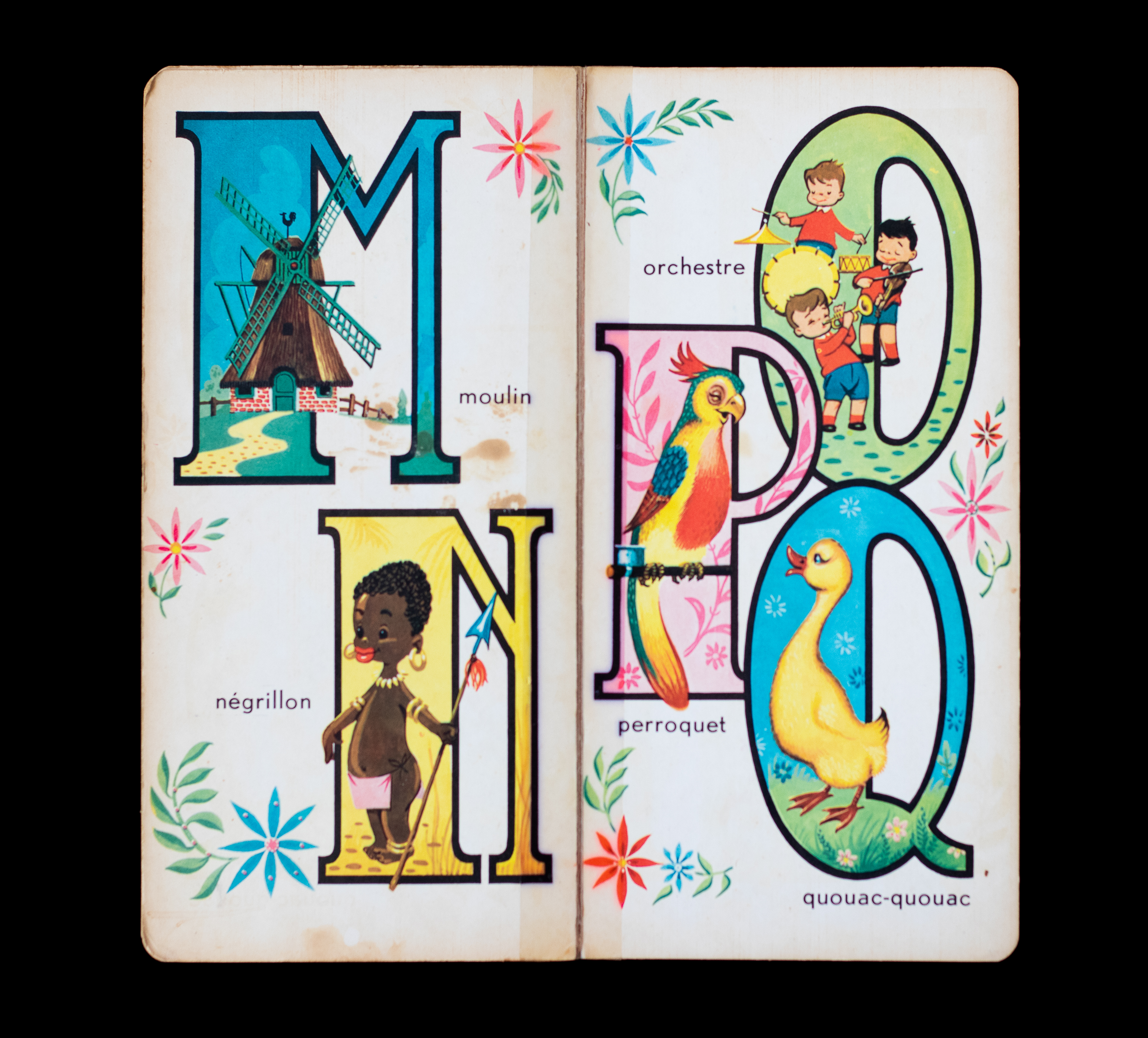2020 R is for Racism: How ABC Books Taught Children to Hate, Gallery at the High Low, St. Louis, MO
discovery When I was 8 years old, I checked out a group of books from my local library, the Lewis & Clark Branch. Named for its location on the Lewis & Clark trail, aka HWY 67, in North St. Louis County, it is a large branch with a decent selection of books. In this group of books was an alphabet book. I did not recognize the word when I turned to the letter N, so I asked my father to tell me what it was. He snatched the book out of my hands and stormed off with it. He never talked to me about what it said but I knew it upset him. In 2018, I thought about this experience and realized that the word in that book was Nigger.
elements I looked online and found more alphabet books that included offensive and derogatory words and images of not only Black people but indigenous people and other minority groups. I purchased a few, borrowed others from the library, and photographed them. There were many books with many pages with just a small selection of photographs making it into the show.
exhibition I wanted to imagine what it would look and feel like to have these books be part of a school curriculum (Mrs. Fischer’s Language Arts Class). What is the level of comfort of owning these books privately as opposed to it being a part of the educational system publicly? Would there still remain this nonchalant feeling of casually teaching one of the most impressionable groups of people, children? Or would there be outrage over teaching hate? Today, we have seen homework that asks to list the pros and cons of slavery or history books that intentionally leave out the marred parts of American History. This is still a controversial topic as we work towards racial equity in the United States.
The video Self-Care In 2020 played in a separate room along with photographs and the classroom installation. Putting this work together was not only laborious but also mentally heavy. I wanted to culminate my work and break up that energy by burning the books. This was complicated for many, to say the least, but I felt it was necessary. Some people were upset that the books were burned, and others were happy about it.
The final part of the exhibition was The Reflection Space: How Do You Feel? Stacks of paper with this question across the top were assembled on a table with pens. Attendees were encouraged to fill out a sheet before leaving the gallery. Capturing this real-time feedback resulted in over 80 responses. With the myriad of responses received, I am working on a second iteration of this exhibition.





